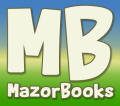Nachamu, Nachamu
Ami
Contributed by Asher ben
Shimon
Click Here for More Holiday Articles

On the 9th of Av, we commemorate the
destruction of both Temples. The Haftarah this week will therefore start
with the words "Nachamu Nachamu Ami." Be comforted, be comforted my
people. The prophet informs us about a time when we will be comforted,
when the third
Temple will be built. "Be comforted" is repeated twice in connection
with the two Temples that were destroyed.
To comfort someone is what we do after he suffers a loss that we cannot
replace. For instance, the loss of a parent. We try to make the mourner
feel better with hollow words that cannot replace the loss. If (G-d
forbid) that same person were to suffer another loss, we would come back
and comfort him again.
The comfort we read about in the Haftarah is different in that this
comfort will be a true consolation, because it will involve a real
replacement of the loss. The loss of the first Temple was harder then
the loss of the second. Five items, including the Holy Ark, were missing
in the second Temple. If so, once we are comforted for the loss of the
first Temple by having the third Temple built, there is no need for
comfort about the loss of the second Temple. That would be included in
the consolation for the first Temple. Why, then, does it say Nachamu,
Nachamu twice?
Although, in a way, the second Temple was lacking in importance, it
nevertheless had an advantage over the first Temple. The second Temple
is referred to by the prophets as being bigger than the first.
It was a bigger building and it stood for a
much longer time before it was destroyed. Therefore, Nachamu, Nachamu,
twice.
Before we'll discuss the difference between the first and second Temple,
we will look at the difference between the Mishkan (the Tabernacle in
the desert) and the Temple in Yerushalayim.
The Mishkan was a traveling sanctuary. Although G-d's presence rested on
the physical building, including the ground it was standing on, it did
not permeate the physical to the extent that it became one with it.
There is no holiness connected with any of the places where the
Mishkan stood. One is allowed to travel around the whole Sinai desert in
a state of impurity without having to avoid those places (were we to
know them). The Temple, on the other hand, was a fixed dwelling.
Its holiness didn't come from above, but rather from within.
The Midrash likens the presence of spiritual light in this world to the
cycle of the moon.
Avraham started teaching monotheism to the world. Fifteen generations
(of leaders) later, King Shlomo built the first Temple. He `sat on G-d's
throne'. His rule extended from one end of the world to the other, just
like Hashem rules the entire world. In his days, there was a `full
moon'. The next fifteen generations after him went down hill, until the
second Temple was destroyed. We once explained that Moshe brought
holiness into this world by bringing it from up in heaven to down below.
"The face of Moshe is like the sun". The Mishkan, built by Moshe,
contained spiritual light and is compared to sunlight. It lit up the
physical, but did not become totally unified with it. King Shlomo built
the Temple during `full moon'. The moon does not have its own light. It
reflects light it receives from the sun. Nevertheless we talk about
moonlight.
The Temples were not only about receiving spiritual light from above;
there was a transformation of the physical. Just like the moon, it
received from a stronger source, but the main focus was on the
spirituality produced down here. The `moon'-light. In the future, the
moon will (again) shine like the sun. It won't need to receive light
from a different source.
The Jewish people are likened to the moon. In a good student-teacher
relationship, the student doesn't only receive from his mentor; he also
learns how to think for himself. Although the new thoughts will be
contributed by his mind, in essence they come from what the teacher gave
him. It is like moonlight that becomes possible only after there was
sunlight shining on the moon.
Jewish people are known to feel regret for their wrong doings. This may
happen at times when they have fallen very low. No one will say that
they feel the regret because of their closeness to Hashem at that time.
The feeling comes from their essence, which is always good. Every Jew
contains within him a G-dly soul, a spark of holiness. That spark will
cry out when it feels a lack of spirituality. This is how the moon will
be in the future. The moon will shine light that comes from within it.
The three levels of light - 1) sunlight, 2) moonlight now, and 3)
moonlight in the future - can be connected with Torah, mitzvot and
teshuva.
The difference between Torah and mitzvot: Man does not do anything for
the existence of the Torah. The Torah exists as a book regardless of the
amount of people studying it. When one studies Torah, he only takes in
what was there before. Even all the new books that are
constantly being written in the field of Torah don't add anything extra
to it. They only reveal what was there before, either by explaining hard
to understand texts, or by applying the original laws
to modern day situations. The mitzvot are not only commandments to man;
their only existence is when they are being performed by man. Man
`makes' the mitzvah.
When the Torah discusses a physical object, the object doesn't become
holy. When one performs a mitzvah with a physical object, it becomes
holy. "A Mitzvah is a candle; Torah, a light." Candlelight can only
exist when the oil and the wick are being transformed to light. Torah
is like the sun that shines from above; mitzvot are like the moon, where
there is a transformation through physical involvement.
When we do mitzvot, we do so because we know
Hashem commanded them. We accept the yoke of heaven. We create
`moonlight' because we receive the `sunlight'. When someone sins, he
does so because he does not feel the need to follow the instructions of
the creator of the
world. As explained before, the teshuva comes from within the person.
The moonlight that will shine in the future from the moon itself.
Concerning the transformation of physical objects to spirituality, there
is an advantage teshuva has over performing mitzvot. Torah is like
daylight, which repels darkness. Mitzvot are like a candle, where the
oil is being transformed into light. Yet teshuva is like burning stones!
A Jewish body can only be sustained by kosher food. Sustenance is not
received "from bread alone, but from the word of G-d." Non-Kosher food,
although created by the word of Hashem, will not be able to sustain a
Jewish body properly. Similarly, not all physical objects can be used to
perform a mitzvah. A shofar has to be made from a ram's horn. A bull's
horn or electric keyboard will not help us fulfill the mitzvah of
hearing the shofar on Rosh Hashana. Only `oil'
will burn.
If it happened that someone ate non-kosher food, or sinned in any other
way, but did teshuva later, he may be able to transform his sins into
merits (when the teshuva is done properly). Even a stone, which in
general is not a material that burns, will burn. We cannot transform the
holiness contained within non-kosher food. We cannot make a stone burn;
it is not oil. However, since Hashem also created it, in essence it has
the ability to burn. Only teshuva can reveal
that. Of course, this does not mean we should sin in order to repent. We
are all given the strength not to fall for temptation. It does, however,
make it more understood why we were created with a desire to sin. The
purpose of a sin, once it was done, is to repent for it.
The Mishkan was like sunlight/Torah. Its holiness permeated the physical
ground on which it was standing, but it was only temporary. It was
constantly moving to different locations. The first Beit Hamikdash was
like moonlight/mitzvot in the way it received from the sun. At that
time, the Jewish people were more or less keeping the Torah and its
mitzvot properly. Although it was a steady dwelling place (as opposed to
the traveling Mishkan), the holiness did not
remain on the site after it was destroyed. The fire burned only when
there was oil and a wick.
When the Jewish people returned from their seventy years in exile to
atone for their sins, they were on the level of a ba'alei teshuva. The
destruction of the first Temple and the subsequent exile revealed that
`stones' also had the ability to burn. This transformation of negative
to positive is expressed by the fact that it was Koresh, a non-Jew, who
asked for (and helped) the Temple to be rebuilt. The holiness of the
first Temple was greater than the second because it
came mainly from a revelation from above. It therefore had the presence
of the Holy Ark, etc., which revealed G-dliness. The second Temple had
an advantage over the first in that the holiness came from within the
physical world. Therefore, although the building is destroyed, the site
remains holy. Time and space define the physical world. Since the second
Temple was more connected with the physical aspect of the world, it was
bigger in size and had a longer life
span.
Nachamu, Nachamu Ami. We have to be comforted for the loss of both the
first and the second Beit Hamikdash, each with their own aspect. The
third Temple will have both aspects.
The week after the ninth of Av, we always read Va'etchanan, which
repeats the story of the giving of the Torah. What is the connection
between that and Nachamu? The first set of stone tablets with the Ten
Commandments came with a very strong G-dly revelation from above,
which placed the entire Jewish nation on a high spiritual level. As we
all know, the people fell by making the golden calf and the first set
was destroyed. The physical stones broke; the spiritual element it
contained returned to heaven - the first Temple. The second set of
tablets came after the Jewish people repented for a sin. The revelations
that came with it were lesser than the first set. Today, only those who
are actually involved with the Torah can be holy.
Nevertheless, the second set of tablets had
an advantage over the first. The second set was never broken. The
holiness remained connected with the physical stones forever – the
second Temple.
By the Torah repeating the story of the giving of the TenCommandments,
it is as if they are being given again. Although this week we will read
about all the events that took place then,
including the breaking of the first tablets, we can say that even the
first tablets have the advantage of the second tablets. After all, the
Torah told us (the first time) that there was a sin, which was repented
for. We also know about all the sins and punishments that happened the
forty years after the Torah was given. In a way, therefore, even the
first tablets are being `given' this week, along with the advantages of
the second tablets. That is the connection between Va'etchanan and
Nachamu. Just like we receive the Torah this week with both aspects, so
will we be comforted with the building of the third Beit Hamkidash with
the advantages of the first and the second Temples.
May it be right now!










